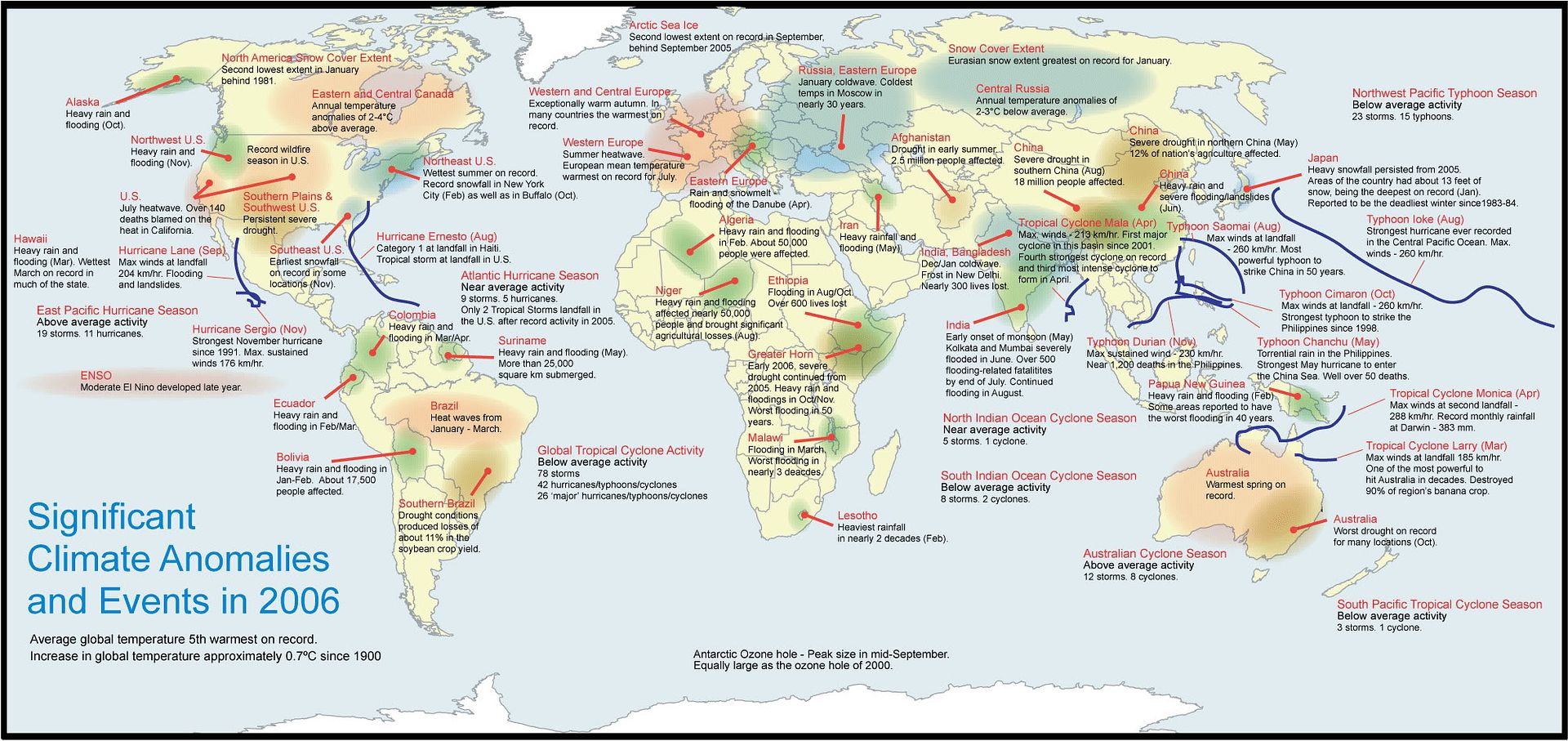1. Earth's Core (1906)
Seismologist Richard Oldham determines that earthquake waves move through the central part of the Earth much slower than through the mantle around it. He surmises that the Earth has a core composed of liquid.
2. Earth's Inner Core (1930s)In 1936, Inge Lehmann documents that some seismic waves from deep inside the Earth's core do not pass through, but are reflected back. It becomes clear that the Earth has an inner core consisting of a small, solid iron sphere that is surrounded by a thick outer core composed of liquid iron.
3. Continental Drift (1911)
Alfred Wegener proposes that all the continents in the world once formed a single, giant landmass that was eventually split apart in a process called "continental drift." Wegener's evidence consists of the "fit" of South America with Africa, fossil distribution and geological similarities.
4. Seafloor Spreading (1950s – 1960s)
Adding his own data on changes in seafloor depth and geology to discoveries of his peers, Harry Hess proposes that Wegener's theory of continental drift is a result of seafloor spreading. He hypothesizes that molten magma from beneath the Earth's crust is oozing up between the plates in the Great Global Rift (now referred to as the Mid-Ocean Ridge). As the hot magma cools, it expands and pushes the plates out from the rift, causing the Atlantic Ocean to get wider over time.
5. Plate Tectonics (1960s)
The work of many scientists reveals that the Earth's surface is broken into several interconnected plates of rock. Earth's outermost layer, the lithosphere, is broken into at least seven large, rigid pieces. These plates are moving in different directions and at different speeds (about 1 to 4 inches per year) and are crashing together, pulling apart and sideswiping each other. All the action at plate boundaries produces phenomena such as mountains, volcanoes and earthquakes.
6. Troposphere and Stratosphere (1890s)
With the aid of scientific instruments placed on unmanned balloons, Leon Teisserenc de Bort discovers that the atmosphere consists of layers. Bort notices that air temperature decreases steadily up to about seven miles, but remains constant at higher altitudes. After more than 200 balloon experiments, he suggests that the atmosphere is divided into two layers called the "troposphere" and the "stratosphere."
7. Global Warming (late 20th century)
A number of scientists see evidence of a warming trend on the Earth's surface and attribute it to a rise in the concentration of "greenhouse gases." Global warming theory states that an increase of the average temperature of Earth's atmosphere and oceans since the late 19th century can be attributed to humans and increased emissions of carbon dioxide. According to the theory, temperatures will increase further if emissions of these greenhouse gases continue.
8. Cosmic Radiation (1911 onward)
In 1912, Victor Hess travels to 17,500 feet in a hot air balloon (without oxygen) and observes that radiation increases with altitude. Further experiments convince him the radiation is coming from space. We now know that the vast majority of cosmic rays are protons, and therefore have a positive electrical charge.
9. Magnetic Field Reversal (1906)
Bernard Brunhes discovers that the Earth's magnetic field has changed direction and reversed itself. His paleomagnetic study of clay baked by a Miocene lava flow 13 million years ago provides the evidence. It is nearly 50 years before his discovery is accepted by the scientific community.
10. Geological Change (1830s)
Charles Lyell offers proof that the Earth evolved slowly in his multivolume Principles of Geology: An Attempt to Explain the Former Changes of the Earth's Surface by Reference to Causes Now in Operation, published between 1830 and 1833. In his work, he advocates the then-controversial idea of uniformitarianism — the idea that the Earth was shaped entirely by slow-moving forces acting over a very long period of time. Catastrophism, a geologic idea that uses biblical chronology to date the Earth, was more accepted at the time.
11. Radiometric Dating (1907)
Bertram Boltwood discovers how to calculate the age of a rock by measuring the rate of its radioactive decay. His observations and calculations put Earth's age at 2.2 billion years. Although we now think the Earth is nearly twice that age, this number was a dramatic increase over the accepted age at the time. Boltwood's formulas are compatible with several radioactive elements, including carbon-14, which has been used to date historical artifacts.
12. Periodic Ice Ages (1930s)
Serbian astrophysicist Miultin Milankovitch develops a theory relating Earth's motion to long-term climate change and ice ages. His mathematical theory of climate uses variations in solar radiation based on season and latitude. His theory posits that cyclical variations in Earth-sun geometry, such as orbit shape and axis angle, result in different levels of solar energy reaching the Earth.
source : http://science.discovery.com







